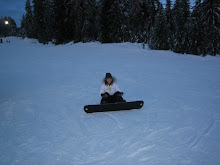"Any industrial technology that dramatically extends our capabilities also makes us uneasy by challenging our concept of humanity itself" (Murray 1). New media is used to extend our ability to communicate. The computer is a truly revolutionary invention humankind uses to merge into art. "All media are extensions of ourselves serve to provide new transforming vision and awareness," quoted in Hamlet on the Holodeck, by Marshall McLuhan.
A new vision of humanity comes from the idea of storytelling, which is created through computers. Famous literary critic, Northrop Frye, knew "it was possible to believe that the formal beauty of literary art is an expression of its deeper truth" (Murray 4). As with everything, in reality or the imaginary, stories do not tell the whole truth about the world. The accepted beliefs are created by society based upon the art created in its new age. The tendency of technology to overpower the imagination, has been directed to the senses of vision and hearing with immediacy, gearing the psychological aspects towards a better life with technology.
By depicting reality, integrating interactivity, and creating simulations, human awareness is raised to believe that technology is art, and art is the future. The future, representing the real world and the imaginations of the creator. Converging media into daily life has challenged art in the age of new media. "The technical and economic cultivation of this fertile new medium of communication has led to several new varieties of narrative entertainment" (28). Digital storytelling has led artists to recreate the imagination and tradition. "New narrative traditions do not arise out of the blue. A particular technology of communication--the printing press, the movie camera, the radio--may startle us when it first arrives on the scene, but the traditions of storytelling are continuous and feed into one another both in content and in form" (28). Media Convergence affects movies, television, plays, etc. to bend the boundaries of print (old) storytelling.
The age of new media represents humanity as real. Reality television is used to promote the active audience. As Murray states, a writer must expand a story to include multiple possibles for a reader to assume an active role. Imagination, vision, and awareness, is used to obtain a creative mind, therefore becoming an artist in the age of new media (38). Allowing a reader the tools to create what he/she believes to be true, paves way for self-awareness. By not giving a reader one way of interpreting a story, but the many possibilities of a blank page, the reader is challenged to provide a unique meaning, catering to the art of the new world.
Subscribe to:
Post Comments (Atom)

Traditionally, art challenges the audience, demanding a critical distance wherein we can consider the issues addressed. This is the crux of Murray's book: can we have a critical distance with such an engaging form of media? What is your thesis here?
ReplyDeleteThere will always be distance within this type of active media, although sometimes seeming unrecognizable to some. Whether from computers or from television, an audience is capable of considering the difference between reality and creativity through imagination, therefore proving the challenge of art.
ReplyDeleteThe thesis should have been presented more clearly that new media is used thoroughly for communication. With communication presenting itself as a means of storytelling, the challenge of media becomes difficult to determine what may or may not be real to an audience. There must be distance between art and an audience, but also being able to engage in an active role in communication.